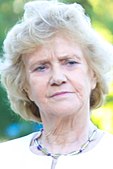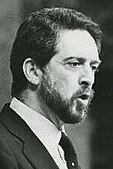1995 Seville City Council election
| |||||||||||||||||||||||||||||||||||||||||||||||||||||||||||||||||||||||||||
All 33 seats in the City Council of Seville 17 seats needed for a majority | |||||||||||||||||||||||||||||||||||||||||||||||||||||||||||||||||||||||||||
|---|---|---|---|---|---|---|---|---|---|---|---|---|---|---|---|---|---|---|---|---|---|---|---|---|---|---|---|---|---|---|---|---|---|---|---|---|---|---|---|---|---|---|---|---|---|---|---|---|---|---|---|---|---|---|---|---|---|---|---|---|---|---|---|---|---|---|---|---|---|---|---|---|---|---|---|
| Opinion polls | |||||||||||||||||||||||||||||||||||||||||||||||||||||||||||||||||||||||||||
| Registered | 559,451 | ||||||||||||||||||||||||||||||||||||||||||||||||||||||||||||||||||||||||||
| Turnout | 354,331 (63.3%) | ||||||||||||||||||||||||||||||||||||||||||||||||||||||||||||||||||||||||||
| |||||||||||||||||||||||||||||||||||||||||||||||||||||||||||||||||||||||||||
| |||||||||||||||||||||||||||||||||||||||||||||||||||||||||||||||||||||||||||
The 1995 Seville City Council election, also the 1995 Seville municipal election, was held on Sunday, 28 May 1995, to elect the 5th City Council of the municipality of Seville. All 33 seats in the City Council were up for election. The election was held simultaneously with regional elections in thirteen autonomous communities and local elections all throughout Spain.
Electoral system
The City Council of Seville (Spanish: Ayuntamiento de Sevilla) was the top-tier administrative and governing body of the municipality of Seville, composed of the mayor, the government council and the elected plenary assembly.[1] Elections to the local councils in Spain were fixed for the fourth Sunday of May every four years.[2] Voting for the local assembly was on the basis of universal suffrage, which comprised all nationals over 18 years of age, registered in the municipality of Seville and in full enjoyment of their political rights, as well as resident non-nationals whose country of origin allowed Spanish nationals to vote in their own elections by virtue of a treaty.
Local councillors were elected using the D'Hondt method and a closed list proportional representation, with an electoral threshold of five percent of valid votes—which included blank ballots—being applied in each local council.[1][2] Councillors were allocated to municipal councils based on the following scale:
| Population | Councillors |
|---|---|
| <250 | 5 |
| 251–1,000 | 7 |
| 1,001–2,000 | 9 |
| 2,001–5,000 | 11 |
| 5,001–10,000 | 13 |
| 10,001–20,000 | 17 |
| 20,001–50,000 | 21 |
| 50,001–100,000 | 25 |
| >100,001 | +1 per each 100,000 inhabitants or fraction +1 if total is an even number
|
The mayor was indirectly elected by the plenary assembly. A legal clause required that mayoral candidates earned the vote of an absolute majority of councillors, or else the candidate of the most-voted party in the assembly was to be automatically appointed to the post. In the event of a tie, the appointee would be determined by lot.[1]
The electoral law allowed for
Opinion polls
The table below lists voting intention estimates in reverse chronological order, showing the most recent first and using the dates when the survey fieldwork was done, as opposed to the date of publication. Where the fieldwork dates are unknown, the date of publication is given instead. The highest percentage figure in each polling survey is displayed with its background shaded in the leading party's colour. If a tie ensues, this is applied to the figures with the highest percentages. The "Lead" column on the right shows the percentage-point difference between the parties with the highest percentages in a poll. When available, seat projections determined by the polling organisations are displayed below (or in place of) the percentages in a smaller font; 17 seats were required for an
| Polling firm/Commissioner | Fieldwork date | Sample size | Turnout | IULV | Lead | |||
|---|---|---|---|---|---|---|---|---|
| 1995 municipal election | 28 May 1995 | — | 63.3 | 28.5 10 |
26.2 9 |
30.4 10 |
12.9 4 |
1.9 |
| Demoscopia/El País[p 1][p 2] | 10–15 May 1995 | 1,000 | ? | 29.0 9/10 |
25.8 7 |
30.0 9/10 |
12.2 5 |
1.0 |
| CIS[p 3][p 4] | 1–14 May 1995 | 600 | 68.5 | 29.6 | 20.5 | 34.7 | 14.1 | 5.1 |
| Sigma Dos/El Mundo[p 2][p 5] | 3–7 May 1995 | 500 | ? | 27.4 9/10 |
23.0 7/8 |
32.6 11 |
15.0 5 |
5.2 |
| PP[p 6] | 9 Apr 1995 | ? | ? | 29.0 10/11 |
18.0 8/9 |
34.0 12 |
15.0 6 |
5.0 |
| Gruppo/ABC[p 7][p 8] | 9–14 Feb 1995 | 400 | ? | 31.0 10/11 |
17.5 6 |
33.1 11/12 |
15.7 5 |
2.1 |
| Inner Line/PSOE[p 9][p 10][p 11] | 15–28 Dec 1994 | 800 | ? | 37.4 13/14 |
? 7/8 |
28.7 8/9 |
11.1 3/4 |
8.7 |
| 1994 regional election[3] | 12 Jun 1994 | — | 66.9 | 32.9 (11) |
6.2 (2) |
38.6 (13) |
19.9 (7) |
5.7 |
| 1994 EP election[4] | 12 Jun 1994 | — | 66.8 | 36.7 (13) |
4.1 (0) |
38.8 (14) |
16.9 (6) |
2.1 |
| 1993 general election[5] | 6 Jun 1993 | — | 77.5 | 49.1 (17) |
3.4 (0) |
32.8 (11) |
11.2 (3) |
16.3 |
| 1991 municipal election | 26 May 1991 | — | 54.8 | 38.6 12 |
27.6 9 |
24.4 8 |
6.9 2 |
11.0 |
Results
 | ||||||
| Parties and alliances | Popular vote | Seats | ||||
|---|---|---|---|---|---|---|
| Votes | % | ±pp | Total | +/− | ||
| People's Party (PP) | 107,446 | 30.44 | +6.09 | 10 | +2 | |
| Spanish Socialist Workers' Party of Andalusia (PSOE–A) | 100,729 | 28.54 | –10.03 | 10 | –2 | |
| Andalusian Party (PA) | 92,417 | 26.19 | –1.36 | 9 | ±0 | |
| United Left/The Greens–Assembly for Andalusia (IULV–CA) | 45,416 | 12.87 | +6.01 | 4 | +2 | |
| Andalusian Progress Party (PAP) | 710 | 0.20 | New | 0 | ±0 | |
| Voice of the Andalusian People (VDPA) | 549 | 0.16 | New | 0 | ±0 | |
| Humanist Platform (PH)1 | 247 | 0.07 | –0.24 | 0 | ±0 | |
| Spanish Phalanx of the CNSO (FE–JONS) | 236 | 0.07 | –0.03 | 0 | ±0 | |
| Workers' Revolutionary Party (PRT)2 | 212 | 0.06 | –0.14 | 0 | ±0 | |
| Andalusian Popular Unity (UPAN) | 146 | 0.04 | –0.04 | 0 | ±0 | |
| Blank ballots | 4,826 | 1.37 | +0.58 | |||
| Total | 352,934 | 33 | +2 | |||
| Valid votes | 352,934 | 99.61 | –0.07 | |||
| Invalid votes | 1,397 | 0.39 | +0.07 | |||
| Votes cast / turnout | 354,331 | 63.34 | +8.49 | |||
| Abstentions | 205,120 | 36.66 | –8.49 | |||
| Registered voters | 559,451 | |||||
| Sources[6][7][8] | ||||||
Footnotes:
| ||||||
References
- Opinion poll sources
- ^ "El PSOE se hunde en las principales ciudades". El País (in Spanish). 21 May 1995.
- ^ a b "El PP cree que la encuesta publicada por un diario madrileño tiene como objetivo alarmar a los electores e impulsar el voto de izquierda". ABC (in Spanish). 22 May 1995.
- ^ "Preelectoral Municipal Sevilla (Estudio nº 2173. Abril-Mayo 1995)". CIS (in Spanish). 14 May 1995.
- ^ "Estudio CIS nº 2173. Ficha técnica" (PDF). CIS (in Spanish). 14 May 1995.
- ^ "Una encuesta señala al Partido Popular como la lista más votada en Sevilla". ABC Sevilla (in Spanish). 19 May 1995.
- ^ "El PP sería el partido más votado en todas las capitales andaluzas, salvo Córdoba, según una encuesta propia". ABC Sevilla (in Spanish). 9 April 1995.
- ^ "Los futuros gobiernos municipales, pendientes de los pactos". ABC (in Spanish). 4 April 1995.
- ^ "Encuesta de Gruppo para ABC/Resultados municipales". ABC (in Spanish). 6 May 1995.
- ^ "El PSOE-A seguirá denunciando la pinza PP-IU al ofrecer buenos resultados en las encuestas". ABC Sevilla (in Spanish). 25 January 1995.
- ^ "El PSOE reconoce que el PP ganará en cinco capitales andaluzas". ABC Sevilla (in Spanish). 31 January 1995.
- ^ "La encuesta del PSOE está realizada entre "los 800 parientes que Borbolla colocó en la Junta", según el PP". ABC Sevilla (in Spanish). 10 May 1995.
- Other
- ^ a b c Ley 7/1985, de 2 de abril, Reguladora de las Bases del Régimen Local (Law 7) (in Spanish). 2 April 1985. Retrieved 30 June 2020.
- ^ a b c Ley Orgánica 5/1985, de 19 de junio, del Régimen Electoral General (Organic Law 5) (in Spanish). 19 June 1985. Retrieved 30 January 2020.
- ^ "Electoral Information System. Parliament of Andalusia. June 1994. Seville Municipality". juntadeandalucia.es (in Spanish). Government of Andalusia. Retrieved 3 April 2018.
- ^ "Electoral Results Consultation. European Parliament. June 1994. Seville Municipality". Ministry of the Interior (in Spanish). Retrieved 12 November 2017.
- ^ "Electoral Results Consultation. Congress. June 1993. Seville Municipality". Ministry of the Interior (in Spanish). Retrieved 12 November 2017.
- ^ "Local election results, 28 May 1995" (PDF). Central Electoral Commission (in Spanish). Retrieved 16 February 2018.
- ^ "Electoral Results Consultation. Municipal. May 1995. Seville Municipality". Ministry of the Interior (in Spanish). Retrieved 12 November 2017.
- ^ "Elecciones municipales en Sevilla (1979 - 2015)". Historia Electoral.com (in Spanish). Retrieved 30 September 2017.




